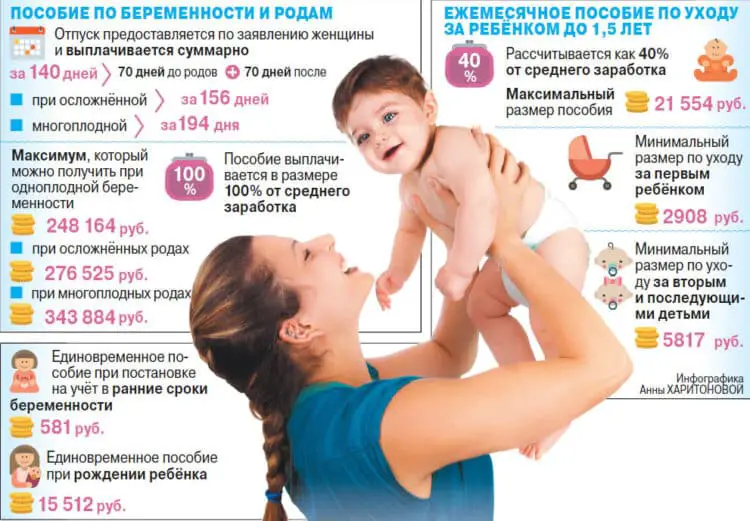Russian demographics have been a major policy issue for the Russian state since its formation in 1991. As the population continues to age and fertility rates remain low, the Russian state has expanded efforts to support families and encourage childbirth. The war in Ukraine and subsequent economic and social disruptions have further strained Russia’s already fragile demographic outlook. The following is a detailed primer looking at demographics and specifically at the experience of childbirth and infant care in Russia.
All benefits are revised every year. All numbers listed in this resource are current for 2021. One US dollar, as of July 2025, is equal to about 78 rubles.
This bilingual resource hopes to build students’ vocabulary skills as well as provide them with a window onto this vital aspect of state policy in Russia and onto the experience of growing families within Russia.
Briefly on Russian Demographics
Much has been written on Russia’s демография (demographics) over the past three decades.
In the 1990s, Russia’s population plummeted due to высокая смертность (a high death rate), низкая рождаемость (a low birth rate), and высокий уровень эмиграции (a high level of emigration). This perfect demographic storm was caused by the collapse of the Soviet government and the Russian economy, leaving citizens without социальное обеспечение (social services), система социальной защиты (a social safety net), or уверенность в будущем (confidence in the future).
Starting in 2000, however, уровень рождаемости (the birth rate) began to improve, eventually surpassing those of such countries as Germany, Canada, and Japan, and rivaling those of the United States. As Russia’s economy improved, it became the world’s second highest destination for иммиграция (immigration) for many years, attracting mostly Russian speakers from former Soviet states that were still faring worse than it. Further, продолжительность жизни (life expectancy) soared to historical highs for Russia, nearing 74 years of age in 2020.
These forces meant that население росло (the population grew) from 2009–2019. In 2021, increased mortality from COVID, coupled with decreased immigration, contributed to Russia’s first decrease in a decade. Exacerbating this is a демографическое эхо (demographic echo); the generation born in the 1990s, one of Russia’s smallest on record, has now grown to adulthood. This means that there are simply fewer people in Russia able to have children, despite an improved fertility rate.
By 2025, Russia’s demographic decline has deepened. The long-anticipated демографическое эхо (demographic echo) continues to limit the number of potential parents, while the war in Ukraine has disrupted family planning and driven many young men abroad or into military service. Despite expanded материнский капитал (maternity capital) and other state incentives, birth rates remain low. The government faces growing difficulty maintaining population stability amid sustained emigration and social uncertainty.
The exact number of Russians who emigrated or were otherwise lost to the war is difficult to calculate exactly, as some who initially emigrated have returned and many Russians still travel across the border on business and vacation (although these trips are increasingly made to non-”Western” countries.
Given this, население России продолжает снижаться (the Russian population continues to decline). Since the beginning of the war in Ukraine, Russia has lost millions in overall population due to a combination of низкая рождаемость (low birth rates), reduced иммиграция (immigration), and высокая смертность (high mortality). Despite state efforts to support families, the demographic outlook remains uncertain. Long-term stabilization will depend on improving производительность труда работников (workforce productivity), restoring immigration flows, and rebuilding public confidence in the future.
Taking a more detailed look at the Russian policies and infrastructure affecting pregnancy, childbirth, and infant care can also elucidate the experience of families in Russia: the challenges they face and the support they receive.
Sex Education in Russia
There is no standard сексуальное образование (sex education) in Russian public schools. In the 1980s, a class called “Ethics and Psychology of Family Life” was introduced, but the teachers were too embarrassed to explain “the birds and the bees,” which is known in Russian as пестики и тычинки (the pistils and stamens). The class was therefore ineffective and soon cancelled.
In 1986, cross-sectional views of мужские и женские половые органы (male and female sexual organs) were added to the anatomy textbook for the first time. However, the textbook still does not mention половой акт (intercourse), контрацепция (contraception), or even планирование семьи (family planning). There is no information on how to protect oneself from болезнь, передающаяся половым путём (sexually transmitted diseases), also known in Russian by the acronym ЗППП.
As for СПИД (AIDS), in Russian—as in English—the disease is most often referred to by the acronym. It stands for синдром приобретённого иммунодефицита (Acquired Immunodeficiency Syndrome).
The Russian Orthodox Church actively opposes sex education in schools. Patriarch Kirill, the leader of the Russian Orthodox Church, and many conservative politicians have made public statements against sex education as well. Some conservative public organizations such as Родительское всероссийское сопротивление (All-Russia Parents’ Resistance) and Всероссийское родительское собрание (All-Russia Parental Assembly) also oppose it.
However, today, in some Russian schools, contraception is explained in special classes such as Основы безопасности жизнедеятельности (The Basics of Safety in Life). A few schools also offer a course called Валеология (Healthy Lifestyle), the term being defined as “the scientific study of the structure, development, protection, and strengthening of human physical and moral health.” Some schools invite a гинеколог (gynecologist) once a year to talk with female high school students about gynecology. Sometimes representatives of firms making прокладки (sanitary pads) will give lectures in schools, distributing brochures and samples of their products.
While most of the processes leading up to it are avoided in Russian schools, most Russian students are taught the basic process of оплодотворение (fertilization), wherein a сперматозоид (sperm) penetrates the яйцеклетка (egg), creating a зигота (zygote), also called оплодотворенная яйцеклетка (fertilized egg). When the zygote divides, the result is referred to as a зародыш (embryo).
Prenatal Care in Russia
Some health expectations for a беременная женщина (pregnant woman) are the same in Russia as in the West. In Russia, women are expected to бросить курить (quit smoking) and не употреблять спиртных напитков (not to consume alcoholic beverages) for the length of the pregnancy.
Some expectations in Russia are different. Doctors generally recommend that pregnant women stop any exercise regime in favor of special гимнастика для беременных (exercises for pregnant women) and light swimming.
Above: While free, state medical care is not universally liked. The state’s recent massive investment in clinics has not reached all clinics or fixed all problems. The above program (from 2017), titled “Check Up,” visits a maternity clinic in Krasnoyarsk and finds several problems. The program is a long-running one covering many social services from local TV channel TVK.
During the вторая половина беременности (second half of the pregnancy), spicy food, chocolate, rich foods, and caffeine are considered potentially dangerous. Углеводы (carbohydrates), мучное (floury products), and крахмал (starch) are restricted. After birth, during кормление грудью (breastfeeding), the diet is often restricted further, ruling out red foods, most fruits, most fresh vegetables, and other restrictions based on the doctor’s advice.
Russia’s public health care system is especially concerned with the health of pregnant women. After an expectant mother registers with a женская консультация (maternity clinic), she receives the right to free prenatal vitamins as well as a small one-time payout. This is done, in part, to encourage women to see their doctor as soon as possible after learning that they are pregnant. Providing early care has been instrumental in bringing down Russia’s младенческая смертность (infant mortality).
The woman is also immediately given анализы крови (blood tests), анализ мочи (urine analysis), and often анализ кала (fecal analysis). These tests look for the presence of diseases and, among other things, check hormone and sugar levels.
After this, the expectant mother undergoes a medical examination at least once a month during the first half of her pregnancy, then twice a month from the twentieth to the twenty-eighth week, and once a week thereafter. These examinations can include not only a general checkup but also more tests such as those already described. She will additionally undergo an электрокардиограмма (electrocardiogram) and УЗИ (ultrasound) two or three times in the course of the pregnancy. Ultrasounds are believed to “disturb” the baby, and therefore are given in relative moderation.
All standard care at a state женская консультация (maternity clinic) is provided free of charge.
Pregnancy-Related Superstitions in Russia
Russian people have a lot of superstitions related to literally every aspect of life, and pregnancy is not an exception. Not everyone follows them, but they are generally known. Females are generally advised to avoid becoming too cold, not lift heavy objects, and especially advised against sitting on cold surfaces. All of this is believed to cause possible бесплодие (infertility).
Once pregnant, a woman is often advised against playing with cats, sitting on the porch, sitting cross-legged, eating fish, getting haircuts, or telling people день родов (when the baby is due). All of this is considered to bring bad luck to the pregnancy by some Russians.
Probably the most followed superstition in Russia is that one should not buy children’s items before the child is born. While most now consider this simply a superstition, it remains as a sort of right of passage for Russian fathers. Traditionally, the father, upon hearing that the baby has been born, will buy the детская кроватка (crib), пустышки (pacifiers), погремушки (rattles), молочная смесь (formula), clothing, and other needed items that day and begins assembling the детская комната (nursery) at home. As Russian women will spend at least three days in the hospital after the birth, this theoretically gives the father enough time to do all this.
After the birth of the child, only the immediate family will be allowed contact with it for the first 40 days of its life. This is generally observed as a way to предотвратить инфекции (prevent infection), although it is also taken from folk belief.
The Maternity Clinic
Most births are performed in state-certified maternity clinics known individually as “родильный дом” (literally: birthing houses) or sometimes by the shortened “роддом” .
Women have a choice when deciding how and where to give birth to their child. Sometimes, for instance, women рожают дома с личной акушеркой (give birth at home with a personal midwife/obstetrician).
Some chose to give birth in a частный родильный дом (private maternity clinic). The cost of this outside of Moscow currently ranges from about 60 to 100 thousand rubles. Inside Moscow, costs generally range from 100 to 200 thousand rubles, depending on the services ordered such as отдельная палата (private rooms) or присутствие отца при родах (having the father present at birth). Luxury options are available as well. These can run as much as four million rubles.
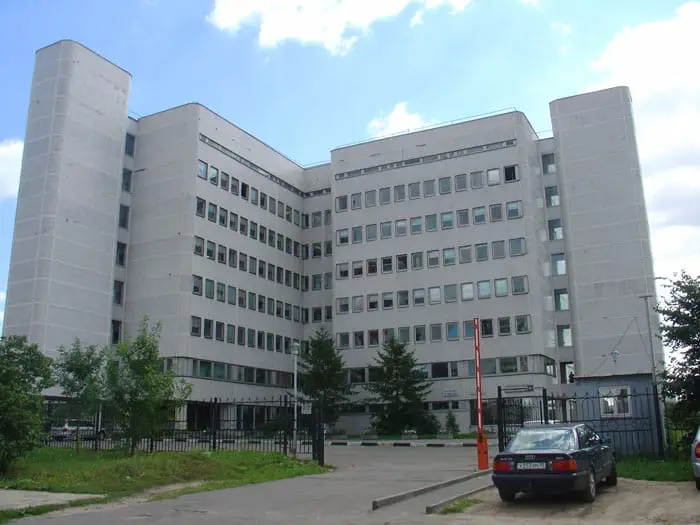
Роддом-8 is one Moscow’s largest maternity clinics
In state clinics, women can opt to have бесплатные роды (free delivery of the baby), where all costs are covered by the state. Here, most costs are likely to be optimized and women can generally expect to give birth in a room with other women giving birth. The women will also sleep in a room with as many as six other women.
Most state clinics, however, now offer additional paid services such as private rooms similar to those offered by private clinics and at similar costs. Further, a woman may give birth in any state clinic she chooses.
The process of vetting clinics usually begins very early in the pregnancy by asking friends, researching online, and actually visiting clinics. This is important, first, as the physical states of clinics can vary widely. Although the state has spent millions of rubles on these clinics since 2000, not all have been upgraded or remodeled to the same level, and some may still be in conditions reminiscent of the 1990s, when most of Russia’s infrastructure decayed as the economy and government crumbled.
While it is now officially discouraged, expectant parents also sometimes come to an understanding with a doctor at a free clinic to make sure they have “хорошее отношение” (good relations) during childbirth. This was once a more straightforward arrangement whereby the parents would agree that that doctor would oversee the birth and would receive some specific amount if everything went well. There are now regulations to discourage this – including preventing doctors from coming in on their day off (so it is not always certain who will perform the delivery). However, a tradition has remained of paying the doctor a large sum (in Moscow, 80,000 rubles is a fairly common amount) upon the delivery of the child. Today, even if a sum has not been agreed upon, it is still customary to gift the doctor something – often in cash along with something like chocolates or flowers – almost as a tip to show one’s благодарность (appreciation/thankfulness) – and knowledge that the state paychecks of doctors are quite low. Such cash gifts are still substantial and might range from 6000-40,000 rubles.
In some state clinics, it is possible to sign a договор с личным доктором (contract with a personal doctor) which will oblige the clinic or doctor to вести беременность (monitor the pregnancy) and проводить необходимые исследования (perform the needed tests) and to принимать роды (deliver the baby).
However, these contracts are not considered by many doctors and patients to be an optimal arrangement, as the parents generally pay more and the doctor, in the end, receives less due to the administrative costs of the contract. An informal arrangement is preferred as it increases the doctor’s economic incentive to provide attentive and sympathetic care.
The mother should bring a few papers to the роддом. These include:
- Обменная карта (exchange card), which is given to the беременная (pregnant woman) on the 32nd week of pregnancy. This is considered the most important document for the future mother because it has all the information about her pregnancy and includes the результаты необходимых анализов (results of the necessary medical tests). In the event of an emergency, the mother has a complete medical history of the pregnancy to hand to any doctor.
- Страховой полис (medical insurance card (as provided by the state or private company))
- Паспорт (passport (the standard ID in Russia))
The clinic generally has все необходимое для пребывания мамы и ребенка (everything necessary for the child and mother’s stay).
However, the mother usually arrives with предметы личной гигиены (items for her personal hygiene / toiletries) and many women prefer to arrive with certain items for themselves and their infant to ensure that they are of high quality and to her personal tastes. Each роддом has its own list of things which the молодая мама (young mother) may bring.
These often can include:
- Памперсы (diapers)
- Прокладки (disposable absorbent pads to lay the baby on)
- Распашонка (a loose-fitting baby shirt)
- Пеленка (a piece of cloth to wrap the baby in)
- Чепчик (bonnet)
- Тапочки (slippers)
- Посуда (dishes) – for the mother
- Еда (food – especially apples and other high-nutrition, low-acid foods, etc)
Above: A woman discusses her prepations for entering a Russian maternity clinic.
There are also some restrictions for what can be brought in роддом. A lot of foodstuffs are prohibited, such as those which can spoil easily such as кондитерские изделия с кремом (pastry with cream) and мороженое (ice-cream), and foods that contain caffeine such as кофе (coffee) and шоколад (chocolate). Потенциальные аллергены (potential allergens) such as цитрусы (citrus fruits) and клубника (strawberries) are also prohibited.
The woman usually stays at роддом at least three days after giving birth and sometimes for several days before giving birth. The father or others can bring things from home that she or the новорожденный (newborn) may need or want, but is generally banned from actually entering the facility at any time, officially по санитарным причинам (for sanitary reasons).
All items, whether brought by the mother or someone else, are inspected. Forbidden items can be confiscated.
After three days at the роддом (specialized maternity clinics) the woman выписывается (checks out), and the father go through a ceremony of sorts where he meets the mother and the новорожденный (newborn) (sometimes the more colloquial terms “малыш” (baby) or “младенец” (infant) are used). The baby передается (is handed) to the father by two or three members of the clinic personnel and the whole process is usually captured in a фотосъемка (photo session) and sometimes even a видеосъемка (video session). The father is encouraged by the staff to purchase copies of these photos and the video – which are official paid services of the роддом. It is tradition to give gifts such as a bottle of champagne, a box of chocolates, or a small cash gift to each of the personnel present as a sign of gratitude for his/her service.
Baby’s First Documents
Once home from the роддом, the parents must do lot of paperwork to document the child with various государственные органы (government offices).
To do this, they need to obtain две справки из больницы (two certificates from the hospital). These are basically certificates of live birth, though they differ in terms of the form used, the chain of events they set off, and their final destinations.
The first certificate is taken to the ЗАГС, an acronym that stands for органы записи актов гражданского состояния (Government Registry Offices; literally: Offices for Recording Acts of Civil Status), and pronounced “zaks.” It will often be the same place the parents got married in.
At ЗАГС, the parents obtain самый главный документ малыша (the child’s most important document) – свидетельство о рождении (the birth certificate). The parents are required to obtain this certificate no later than one month after the child is born.
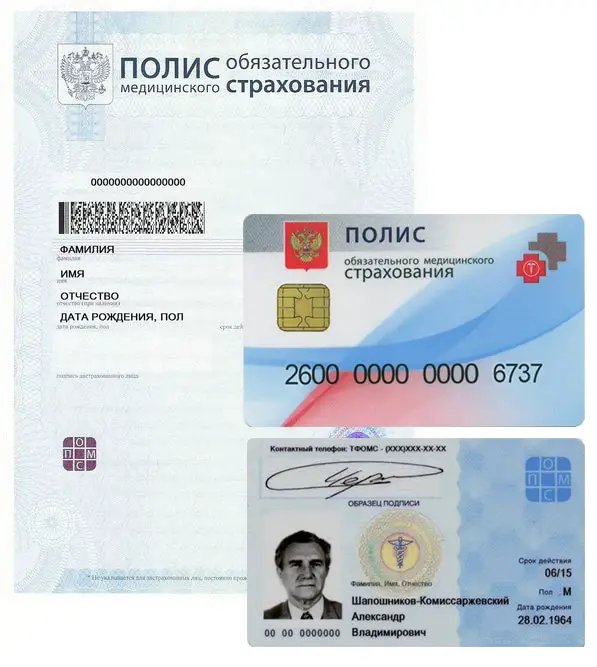
An example of the Obligatory Medical Insurance Policy documentation, which comes with a paper certificate with QR code and a plastic, chipped card.
Lastly, a newborn, just like any other Russian citizen, имеет право на получение полиса обязательного медицинского страхования (is entitled to receive a mandatory medical insurance policy). This policy is often referred to be the acronym “ОМС”, and pronounced as “oh-em-es”. This ОМС gives Russians право бесплатно получать помощь в государственных медицинских учреждениях (the right to receive free care in state medical facilities) anywhere in the country.
This полис (policy) is issued as a small plastic card which looks something like a credit card.
At the same time the parent is applying for ОМС, they may also apply for полис добровольного медицинского страхования (supplementary medical insurance policy) (most often referred to by the acronym “ДМС” and pronounced “deh-em-es”). ДМС is used at private clinics and often starts at 20,000 rubles per year for basic plans. The “insurance” often acts more like a subscription plan for the battery of examinations that the infant receives such as патронаж, диспансеризацию (medical check-ups), and delivery of state-supplied прививки (vaccinations). Private insurance programs are appealing to those who can afford them, because often they provide doctors that pay house calls after the first month, saving parents the hassle of waiting in long lines at state clinics. Private clinics also often offer a wider variety of imported vaccines and even mobile laboratories.
The specifics on how all these procedures are carried out меняется почти каждый год (change almost every year). For example, the agency where вписывают родителям в паспорта данные ребенка (they inscribe the child’s information into the parents’ passports) has changed three times in the last 10 years or so. Procedures also often change. Parents often обращаются к государственным сайтам (check the government websites) and also check unofficial форумы (internet forums) to see what to do and what to expect.
The other справка из больницы (certificate from the hospital) is used for получение единовременного пособия по рождению ребенка (receiving a onetime state benefit for the birth of a child). This is part of a wider system of family social support services and will be discussed below.
State Medical Care for Infants
The day after the mother and her newborn check out of the maternity clinic, information on the child’s birth переданы в детскую районную поликлинику (is transferred to the district children’s clinic – a state-run facility) serving the district in which the family resides.
After this, участковый врач и/или медсестра (a district doctor and/or nurse) from the поликлиника (clinic) visit or check in with the newborn on the second and third week after discharge. Медсестра (a nurse) is obliged to check in twice a week. This is known as патронаж новорожденного. (literally: regular house calls to the newborn).
Следят за его состоянием (they monitor the baby’s condition), рассказывают родителям как ухаживать за малышом (explain to the parents how to take care of the baby), including how to bathe him, feed him, чистить носик и ушки (clean the nose and ears; note that ‘носик и ушки’ are in the diminutive, to imply the nose and ears are small), обрабатывать пупочек (tend to the navel area), etc.
The medical workers also give общие рекомендации (general recommendations) regarding the baby’s care and usually talk to the mother about the advantages of грудное вскармливание (breast-feeding).
The house call arrangement Патронаж continues for one month and then the mother and child go into the clinic for check-ups once per month thereafter. The clinic also has, once per week, a “грудничковый день” (‘Infant Day’). Note that “грудник“, a word for “infant” comes from the word “грудь“, or “breast”, referring to breast feeding. On this day, pediatricians and other doctors проводят плановую диспансеризацию (administer standard medical examinations) for children under one year of age.
This is considered both efficient and sanitary as it can then be done at the clinic without exposing the infants to older children. On these days, прием больных детей не осуществляется (sick children are not admitted), so as not to infect the healthy children that are receiving routine check-ups.
When the baby is one month old, she is legally entitled to be seen, for free, by a neurologist, ophthalmologist, детский хирург (pediatric surgeon), and детский ортопед (pediatric orthopedist) in addition to monthly visits to a pediatrician (which are also free).
The pediatrician monitors the baby’s общее состояние (general condition) and развитие (development; including weight, height, etc.). The specialists also evaluate the baby’s общее состояние and look for отклонений в развитии в своей области (any signs of problems in their development according to their areas of expertise).
While visits to the pediatrician are monthly, visits to the specialists happen again at three, six, nine, and 12 months of age (although not all doctors are seen each time).
In addition, the child visits оториноларинголог (an ear, nose, and throat doctor) at six months and детский стоматолог (a pediatric dentist) at nine and 12 months. These visits are, again, free.
Vaccination of Infants in Russia
During visits to the pediatrician, проводятся профилактические прививки (vaccinations are administered) according to a schedule as issued by Министерством Здравоохранения (The Ministry of Health). Vaccinations are not mandatory, but they are free, and most Russians receive them.
Some Russians also pay for “upgraded” vaccinations – ones imported from abroad, rather than the free отечественные препараты (domestically produced medicines). Imported vaccines are generally regarded as being of higher quality.
According to the recommended vaccination timetable, the baby’s first shots are given at the роддом (maternity clinic) in the first 24 hours after birth and then continued at one month of age, three months, etc.
Vaccinations are given for гепатита В (hepatitis B), туберкулеза (tuberculosis), дифтерии (diphtheria), коклюша (whooping cough), столбняка (tetanus), полиомиелита (polio), кори (measles), краснухи (rubella), and паротита (parotitis).
Family Social Support Services
In Russia, all mothers are eligible for особая социальная поддержка и защита государства (special social support services and state protection). This starts from the moment she finds out she is pregnant, up until the time that her child reaches the age of three and sometimes longer.
First, Russia’s трудовое законодательство (labor legislation) demands that employers retain лояльное отношение (loyal relations) with mothers. For example, new employees are usually subject to a испытательный срок (probationary period), during which time they may be let go for any reason. However, pregnant women and mothers of children under eighteen months are exempt from this rule and may not be terminated – including if they become pregnant during the probationary period. An employer may not dismiss a pregnant woman, a woman with a child under the age of three, or a мать-одиночка с ребенком до 14 лет (a single mother with a child under the age of fourteen). The woman can quit voluntarily, but will otherwise only legally lose her job if the company goes out of business.
These women also have the right to demand to shift to part-time work and to decline to go on business trips. They are prevented from working работа сверхурочно (overtime), ночные смены (night shifts), weekends, or holidays. In addition to a regular lunch break, working women with children under the age of eighteen months must also be given перерывы на кормление ребенка (‘child-feeding breaks’). These are supposed to occur каждые три часа по тридцать минут (every three hours for thirty minutes each) and must be considered part of their paid working time. Unfortunately, the time it would take most women to travel home and return to her workplace is not subject to this same rule and it is generally unworkable to transport the child to the workplace every three hours. This makes the law a largely unworkable one for most women.
- Infographic on the legal protections and social benifits awarded to new and expectant mothers. Infographic from MyJus.ru, a legal consultancy in Russia.
All workers in Russia are entitled to отпуск в двадцать восемь дней (twenty eight days of vacation) and to be paid for those vacation days. Pregnant women are additionally entitled to отпуск по беременности и родам (maternity leave) (also commonly known as декретный отпуск (maternity leave)) for семьдесят дней до родов и семьдесят дней после родов (seventy days before and seventy days after giving birth). В случае если женщина ожидает больше одного ребенка (in the case that a woman is expecting more than one child), she is entitled to eighty-four days leave prior to giving birth and 110 days after.
All benefits are revised every year. All numbers listed in this resource are current for 2021. One US dollar, as of July 2025, is equal to about 78 rubles.
During her декретный отпуск (maternity leave), the woman is also entitled to a пособие по беременности и родам (benefit for pregnancy and birth). This is paid в размере ста процентов среднемесячного заработка (one hundred percent of her average monthly wage) for each month she is on leave. In the event of complications or multiple births, mothers can be eligible for more than this. The state is responsible for paying this benefit to the employer, who must then transfer it to the mother.
Expectant mothers are eligible for free лекарства и витамины (medicines and vitamins) from the state as prescribed by her doctor. Russia began these programs to encourage women to visit the doctor early, as this has been shown to reduce complications later in the pregnancy.
After the child is registered with ЗАГС after birth, the parents become eligible to receive a one-time пособие по рождению ребенка (child birth benefit) of 26,941 rubles. This benefit is provided by the state and delivered via one of the parent’s employers (or the Social Services Fund if neither parent is employed). A growing number of regions (about 40 at time of writing) offer a much larger payment to pregnant full time university students and to a lesser extent, girls in secondary school. This payment ranges from 100,000 to 150,000 rubles for those who register a pregnancy after 12-22 weeks. Proponents of these regional programs argue that this support is necessary for vulnerable young mothers, while critics argue that it may normalize teen pregnancy.
This one-time по рождению ребенка is paid for each child. In addition, women are entitled to receive материнский капитал (maternity capital). This is a certificate worth 690,267 rubles for the first child, and 221,895 rubles for the second. This may be spent on specific things exclusively via bank transfer. Up to 10,000 rubles may be spent at the mother’s discretion. The rest must be spent on улучшение жилищных условий (improving living conditions – i.e. purchasing an apartment), получение образования ребенком (obtaining an education for the child), or формирование накопительной части трудовой пенсии матери (applied to the mother’s retirement savings).
Above: a video blog on maternal capital and how it can be used.
There are also special benefits доступные только москвичам (available only to Muscovites) which are provided by the Moscow city government. While some other cities and regions offer programs of their own, none compare to the size and diversity of Moscow’s programs.
If both parents hold (or the мать-одиночка (single mother) holds) постоянная регистрация (permanent registration) in Moscow, they may receive 5,808 rubles for the birth of their first child and 15,312 rubles for their second and any additional child. This постоянная регистрация is also commonly referred to as “прописка” (registration) and is held only by Russian citizens. If these Russian parents have тройня (triplets) or more children born at one time, they receive an additional 52,800 rubles.
Some regions or cities will also have their own, parallel programs. For instance, Moscow offers payments to молодым семьям (young families) who have a child while both parents are (or the мать-одиночка is) under 30. This “payout” is calculated via the official прожиточный минимум (living wage) calculated by the city each year. For 2010, the official “living wage” in Moscow is 27,302 rubles per month. Young families receive пятикратная величина прожиточного минимума (five times the living wage) for their first child, seven times for the second child, and ten times for the third and any child thereafter. These are one-time payouts.
Various cities also offer натуральная помощь (‘natural help’ – this term refers to benefits paid in a form other than cash). In Moscow, for instance, it is available for all children, regardless of economic circumstances, who are under three years of age. The program provides, at various stages, молочные смеси (baby formula), молоко (milk), творог (quark or farmer’s cheese), and кефир (kefir). Parents can claim these products by obtaining a рецепт (prescription) from their local pediatrician. Based on the рецепт, the parents receive their ration from local молочно-раздаточныe пункты (dairy dispensaries) (also known as “молочные кухни” (milk kitchens)) every two days.
After her maternity leave ends, the new mother has the right to take additional leave known as отпуск по уходу за ребенком (childcare leave). This leave is divided into two time frames with differing benefits. While the child is less than eighteen months old, the mother receives a пособие по уходу за ребенком (childcare benefit) of 40% of her average salary, but not more than 68,995 rubles per month.
For low-income families, the пособие (benefit) may continue after 18 months. If the new mother is unemployed, a new first-time mother, for instance, will still receive 10,103 rubles per month and unemployed mothers of two or more children receive 3,000 rubles per month until the children turn 18. If she is officially still employed, benefits for children of 3-7 years old amount to half the прожиточный минимум (living wage) (in Moscow, that amount in 2021 is currently 27,302 rubles). After three years of age, low income families are still eligible for amounts ranging from 4,300 to 16,400 rubles until the age of 18.
Thus, in total, new mothers in Russia can expect about ₽2.2 million in monetary benefits from the state to be paid from the time of conception to the time that their first child turns eighteen months old. Mothers of a second child can expect about ₽2.7 million. Muscovites can additionally expect about 135,000 rubles for their first child and 190,000 for a second child. These figures are not including the value of any натуральная помощь (‘natural help’ – this term refers to benefits paid in a form other than cash) they may receive.
Conclusion and Further Information
While Russia’s population was growing, President Vladimir Putin and other government officials were quick to emphasize childbirths as the source, and to credit government programs investing in дородовой уход (prenatal care) and уход за новорожденными (infant care) and especially to new programs such as материнский капитал (maternity capital).
These investments have been substantial and Russia’s programs supporting families are quite generous. Improvement in fertility rates also likely came from the removal of the negative impacts of the 1990s. Russia’s economy improved, crime rates lowered, стабильность (stability) returned to the country, and life in Russia’s cities improved substantially. This gave prospective parents the confidence that they could give a new child достойная жизнь (a life worth living). Much of the growth previously seen also relied on strong immigration, as ambitious young people from former Soviet countries where people often spoke Russia flocked to Russia for economic opportunity.
However, recent challenges, most notably the ongoing war in Ukraine, and especially its effects in removing young men from the general population either by having encouraged emigration or military participation, and increased economic uncertainty have undermined some of the gains made in the 2000s. At a time of declining immigration, mostly caused as Russia tightens its borders and immigration enforcement, recent demographic declines have been sharp.
Maintaining or improving fertility rates will require more than financial incentives. Continued investment in infrastructure, health care, and education is necessary, but so is a broader sense of social and economic stability and уверенность в будущем (confidence in the future).
As Russia contends with the long shadow of its демографическое эхо (demographic echo) and the demographic consequences of war, the path forward will demand not just resources, but political will and public trust.
None of these issues are easy or simple. Future installments of Russian for Wonks will look more deeply into other aspects of life in Russia to provide windows on these issues for those that take them seriously.
You’ll Also Love

Russian for Wonks: Demographics and Childbirth
Russian demographics have been a major policy issue for the Russian state since its formation in 1991. As the population continues to age and fertility…
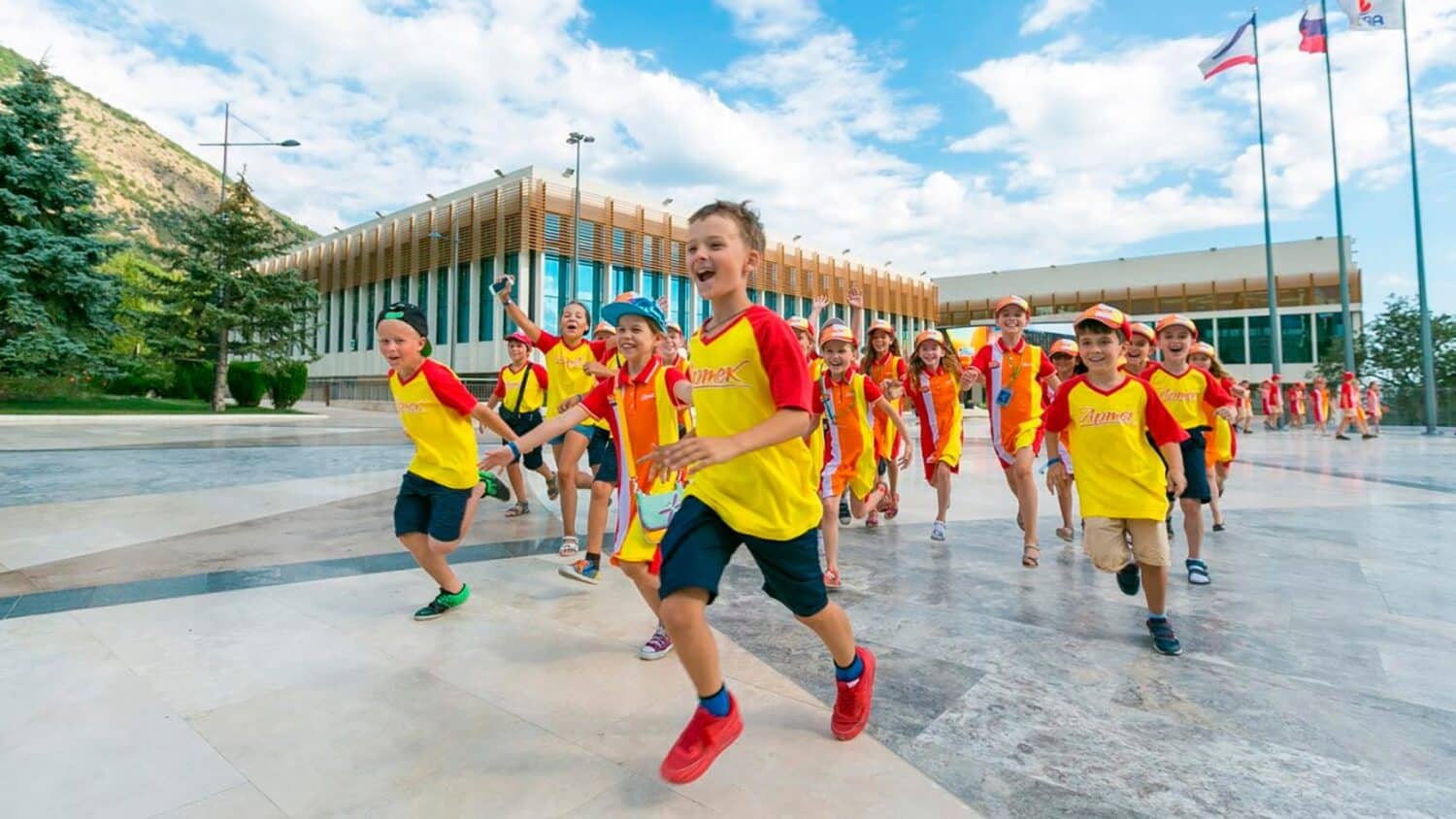
Russian for Wonks: The Geopolitics of Summer Camp
For many Russian children, summer camp is a cherished rite of passage—an escape from school routines into a world of bonfires, games, and shared songs….
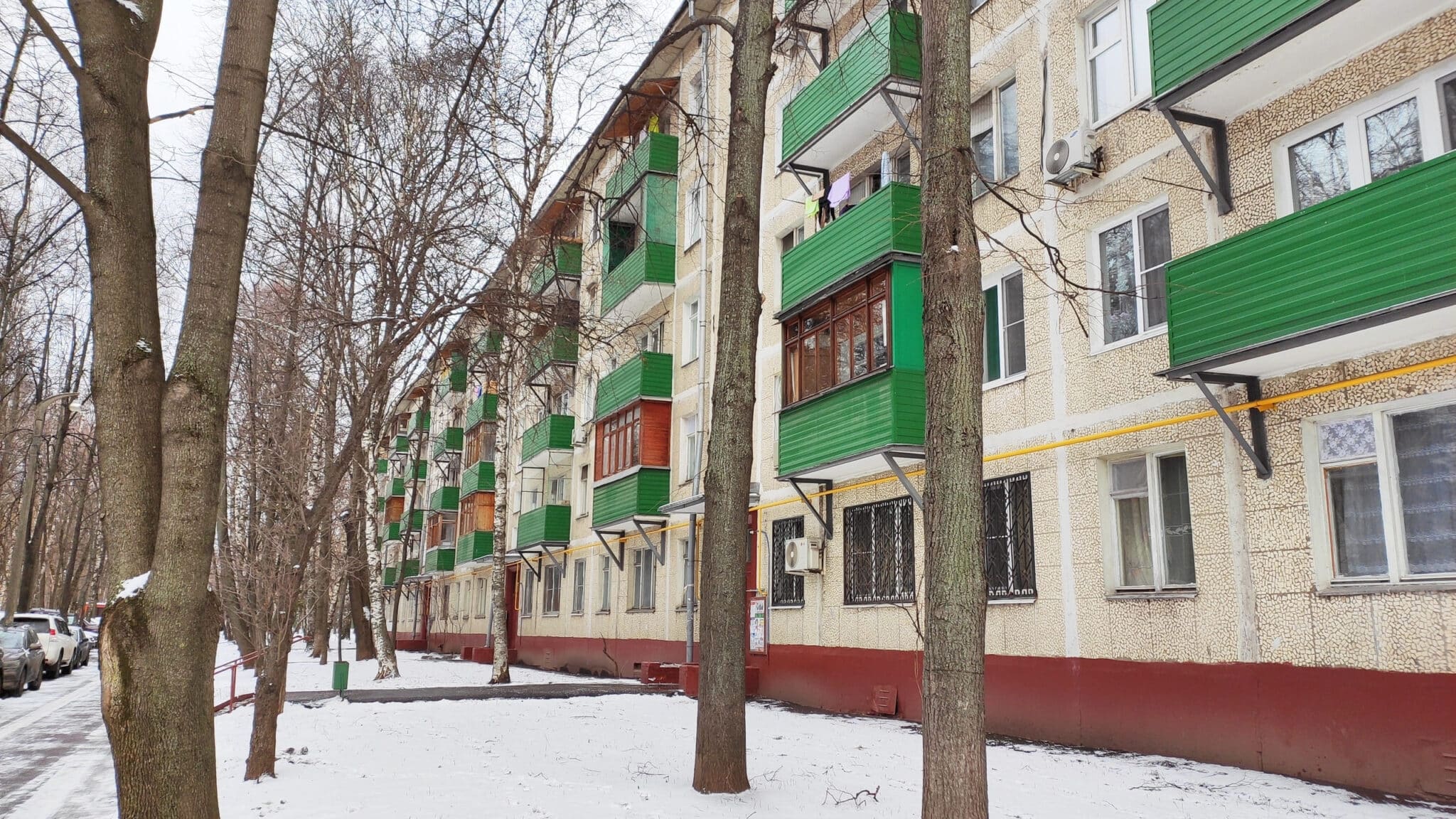
Renting in Russia: Language, Legalities, and Culture
The word for “landlord” in Russian is actually the same as the word for “host” – . Renting in Russia, whether apartments or rooms, comes…

Russian MiniLessons: Подтасовка результатов выборов – Rigging Elections
The following bilingual Russian MiniLesson is meant to build your vocabulary by providing Russian phrases within English text. Hover over the bold Russian to reveal…
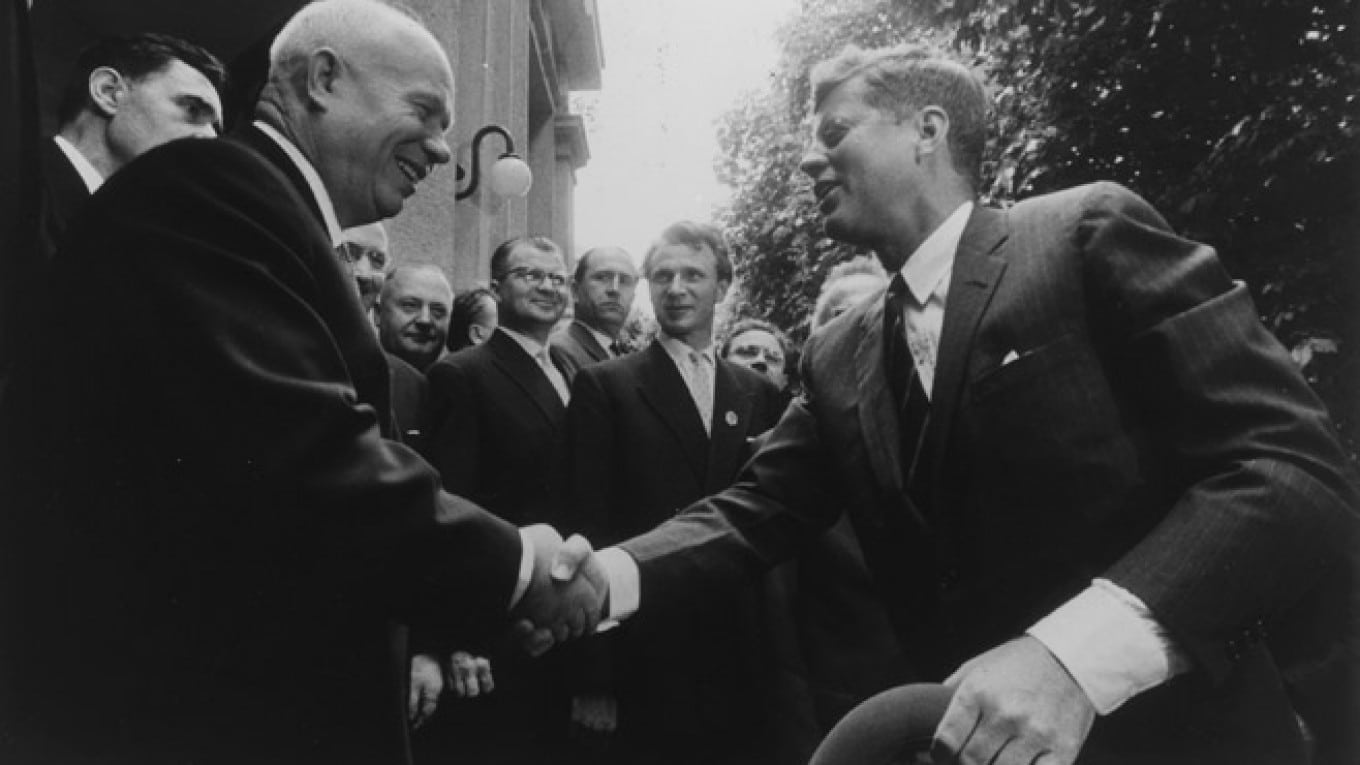
Russian MiniLessons: Холодная война – The Cold War
The following bilingual Russian MiniLesson is meant to build your vocabulary by providing Russian phrases within English text. Hover over the bold Russian to reveal…



